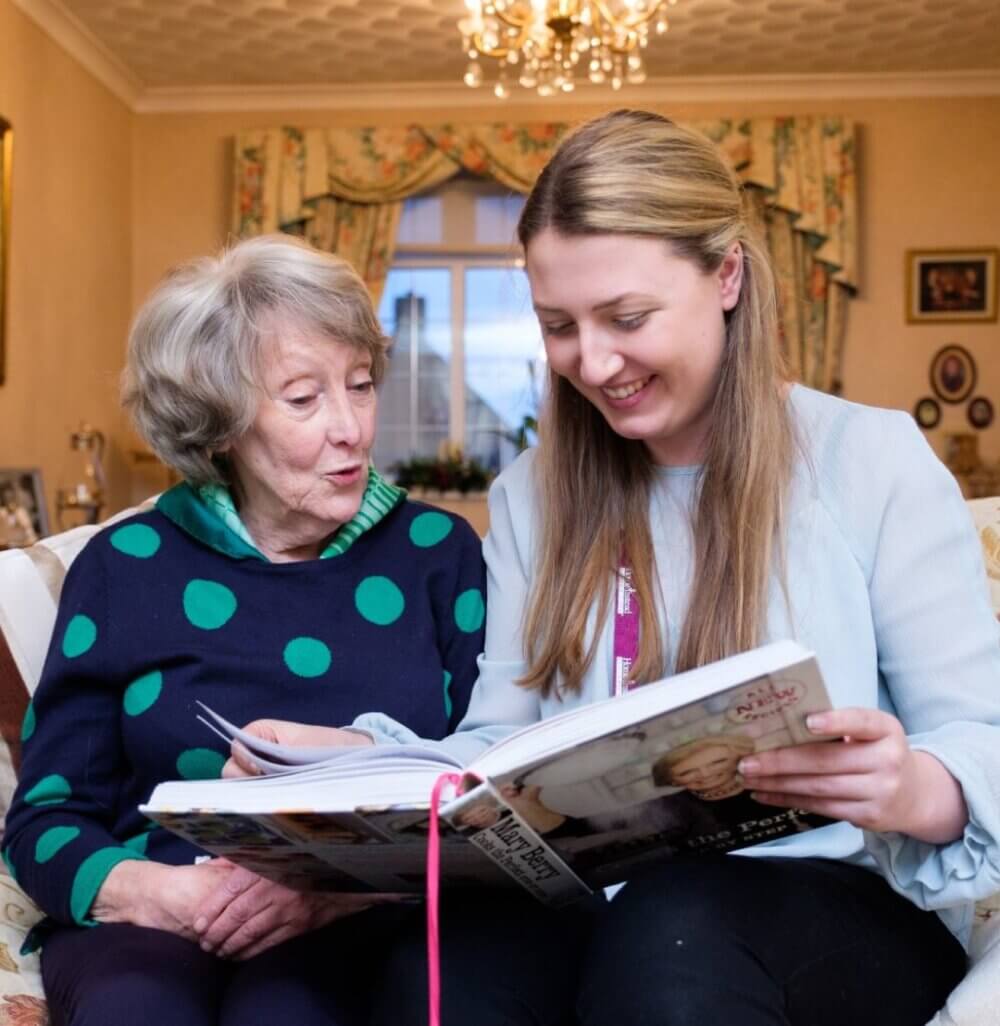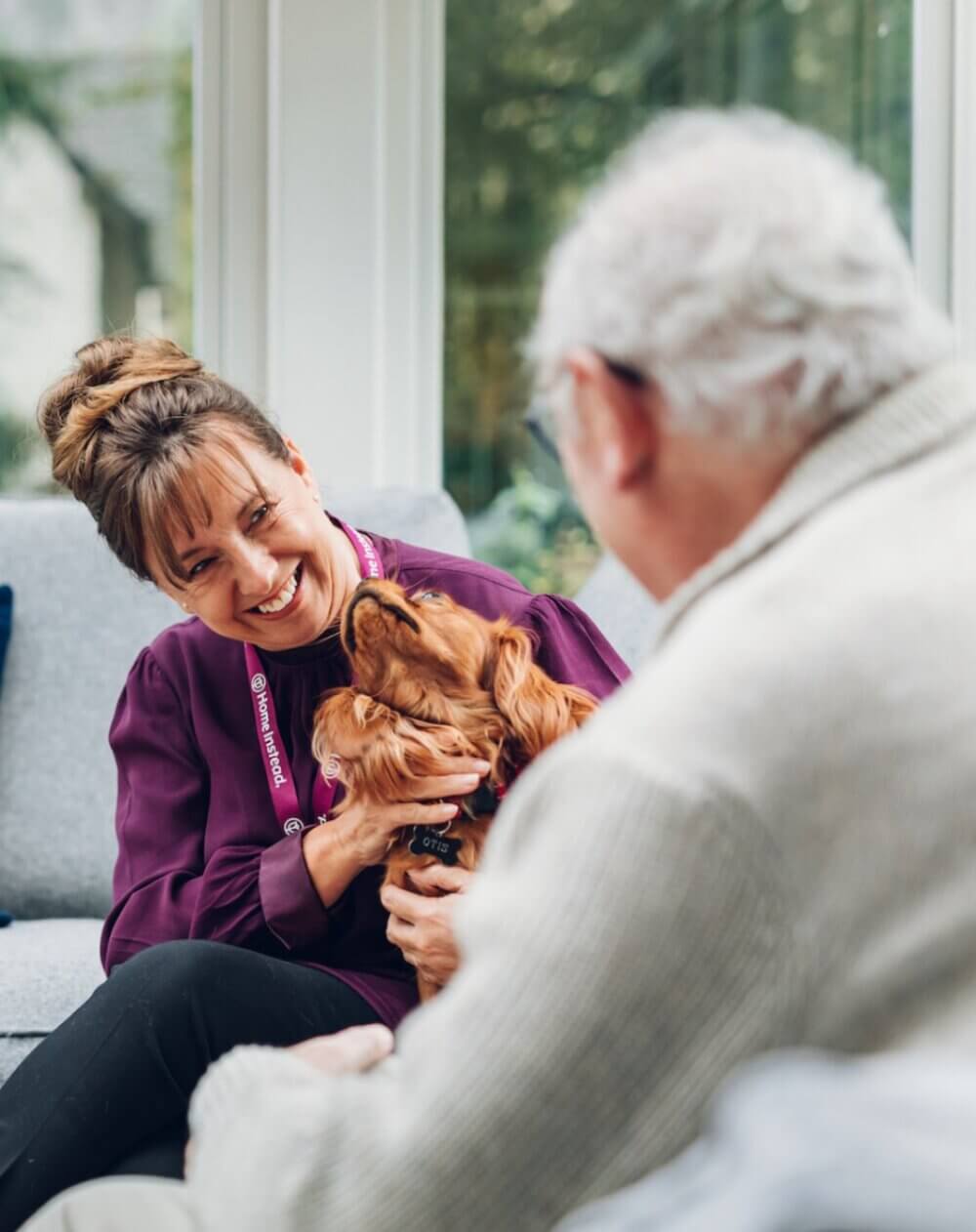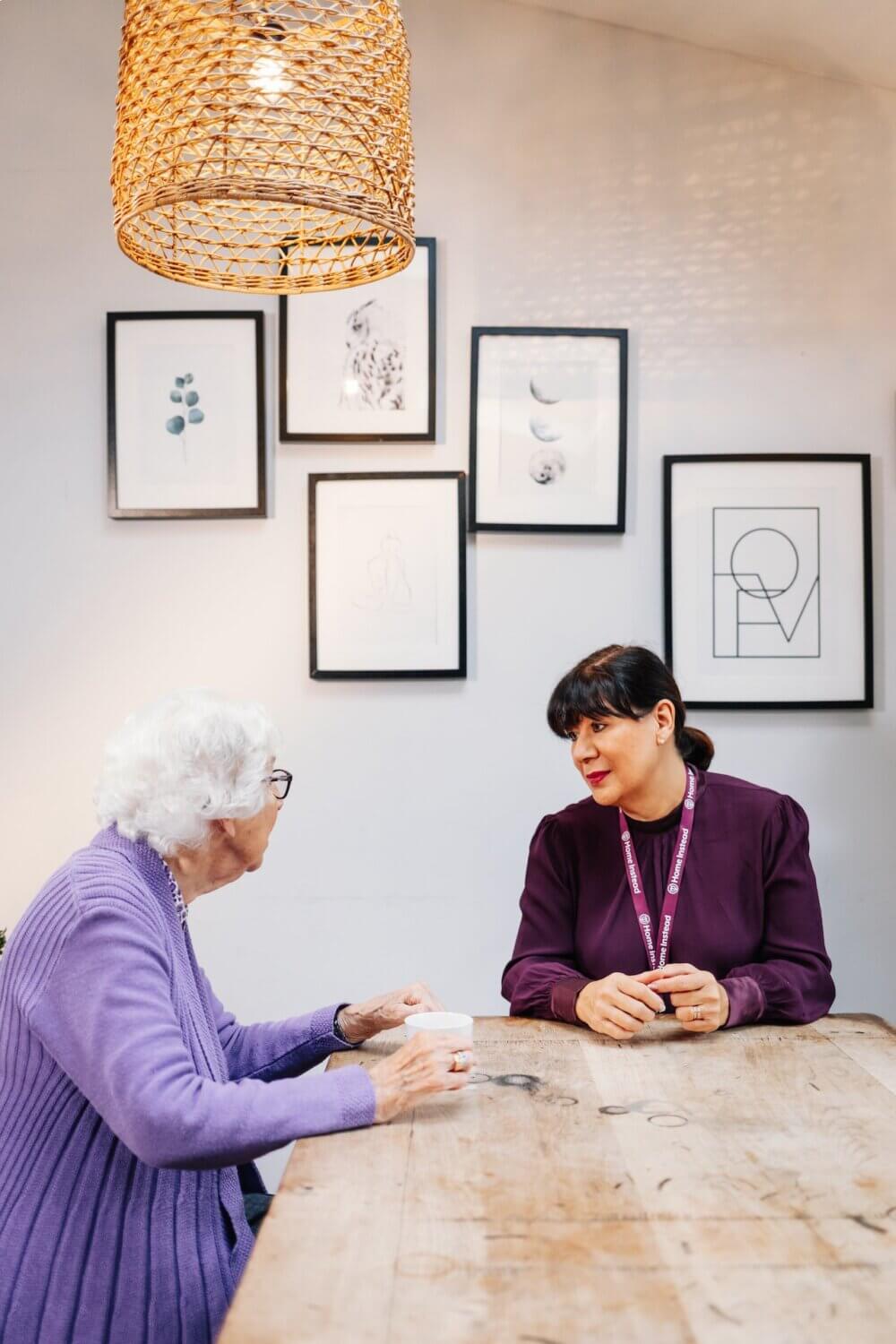Creating a Dementia-Friendly Home Environment
When dealing with an early dementia diagnosis for yourself or a loved one, it can be a daunting challenge.

At Home Instead Hamilton, we empathise with the complexities of dementia and the need to adapt your home to provide a safe, accessible, and dementia-friendly environment.
In this blog, we offer our top tips for creating a dementia-friendly home while preserving the comfort of home.

Optimal Lighting for Dementia
Ensuring good lighting throughout your home is crucial for individuals with dementia. Adequate lighting can help prevent disorientation and reduce the risk of accidents.
Here are some lighting recommendations for dementia-friendly homes:
- Reduce shadows, glare, and reflections by strategically placing lighting sources that cater to dementia care.
- Make use of natural lighting whenever possible, and enhance it by removing window nets and trimming hedges or trees that obstruct the view. Keep curtains open during the day to maximise natural light, a critical aspect of dementia care.
- Install good lighting in high-traffic areas, bathrooms, and on stairs for improved visibility.

Flooring Matters for Dementia-Friendly Homes
Pay close attention to your flooring choices to minimise trip hazards and confusion:
- Remove rugs and mats that can pose a tripping hazard, a key safety consideration for individuals with dementia. These items may be perceived as obstacles to navigate around, leading to accidents.
- Avoid reflective or shiny flooring materials that may appear wet, causing individuals to attempt walking on it and posing a risk.
- Choose flooring in colours that contrast with the walls and have a matte finish. Avoid using colours that resemble real-life elements like water (blue) or grass (green), a design consideration for dementia-friendly homes.

Thoughtful Colour Selection in Dementia-Friendly Homes
Selecting the right colours can enhance the dementia-friendly aspects of your home:
- Opt for contrasting colours for floors, walls, furniture, doors, and other elements, a vital aspect of dementia-friendly design. Bright and bold colours can help individuals distinguish between different areas and objects in their home, reducing confusion.
- Consider changing the colours of items like toilet seats, bannisters, doors, and crockery to make them stand out from their surroundings, a practical choice for dementia-friendly homes.
- Be cautious with bold patterns, as they may be confusing and disorienting, a key aspect of design in dementia-friendly homes. Keep patterns subtle and sparingly used.

Clear Signage in Dementia-Friendly Homes
Using signs and labels strategically can significantly aid older adults with dementia in navigating their home:
- Ensure that signs are clear, bold, and accompanied by visual representations of their meaning, a vital consideration for dementia-friendly homes. Place them at a lower eye level, as seniors often look downwards.
- Labels can indicate what’s inside cupboards, behind doors, and the purpose of switches, making it easier for individuals to find what they need, an essential aspect of dementia-friendly design.

Managing Reflections in Dementia-Friendly Homes
Mirrors can be a source of confusion for individuals living with dementia. Take these steps to minimise their impact:
- Evaluate the necessity of mirrors in your home for dementia-friendly design. Remove unnecessary mirrors or cover them when removal isn’t possible.
- Consider closing curtains at night to prevent reflections from windows, which can be disorienting for those receiving dementia-friendly care.

Assistive Technology for Dementia
Explore assistive technology options designed specifically for people with dementia:
- Invest in telephones with large, easy-to-press buttons, a practical choice for dementia-friendly care.
- Consider devices that offer audio reminders, such as “check the door is locked,” a valuable aspect of technology for dementia-friendly care.
- Use LCD clocks displaying both time and date for clarity, a functional addition to any home considering dementia-friendly care.
- Smartphones and tablets can be equipped with apps and settings designed for individuals with dementia, making navigation easier for them.
If you are concerned about a loved one with dementia, Home Instead Hamilton offers home dementia care services to support their daily life and routines.
We are here to provide the care and assistance needed to ensure your loved one has a full life while being comfortable at home. We will guide you in how to make their beloved home a safe living environment for your loved one with dementia.

Areas We Serve
Hamilton, Uddingston, Motherwell, Bothwell, Strathaven, Bellshill, Rutherglen, Cambuslang & the surrounding areas
G71 5, G71 6, ML2 7, ML4 3, ML1 3, ML1 2, ML2 0, ML4 1, ML4 2, G72 6, G73 5, G71 8, G72 9, G73 4, G71 7, ML1 1, ML1 4, G72 0, ML2 8, ML1 5, G72 8, G72 7
Unit 2 Brandon House Business Centre, 23-25 Brandon St, Hamilton ML3 6DA, UK
01698 532002